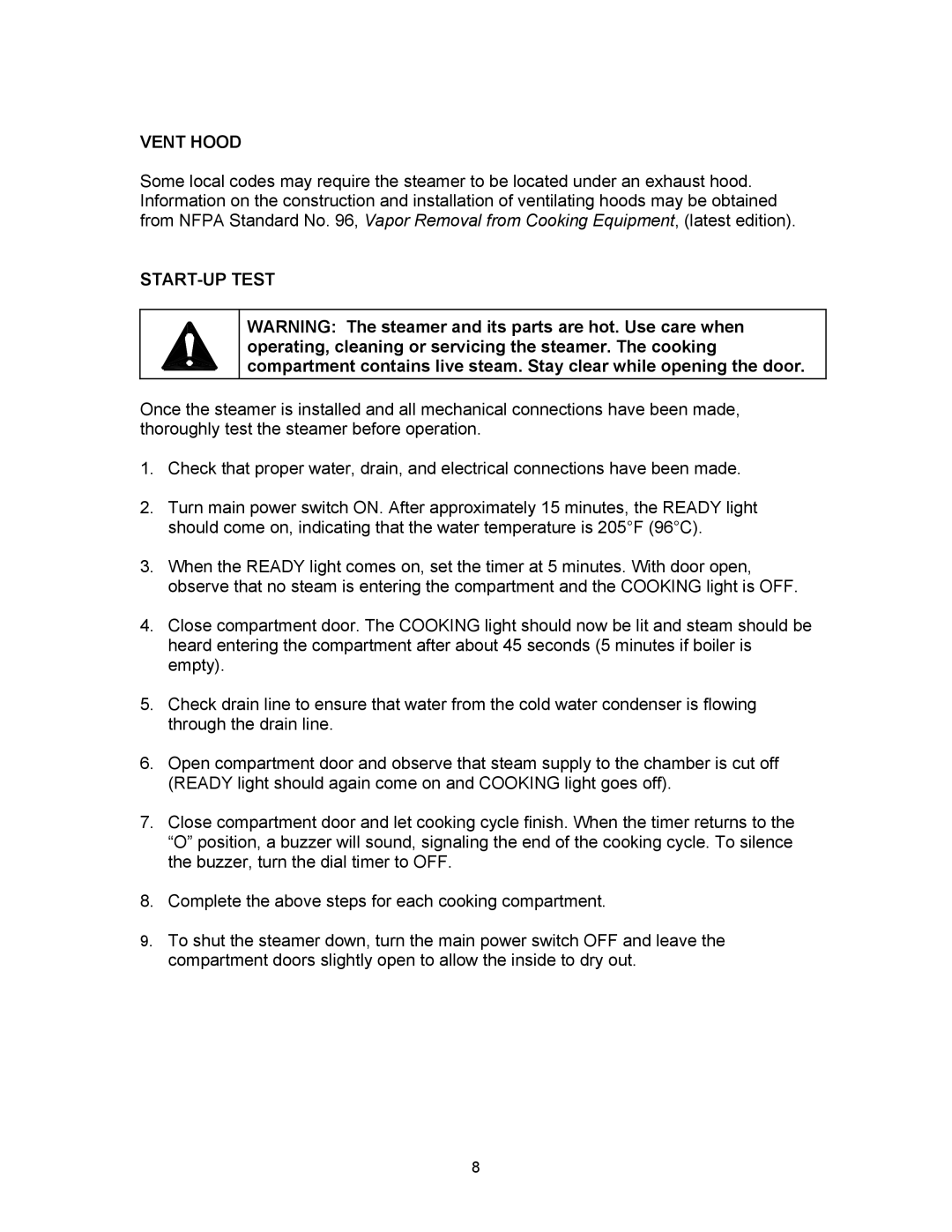
VENT HOOD
Some local codes may require the steamer to be located under an exhaust hood. Information on the construction and installation of ventilating hoods may be obtained from NFPA Standard No. 96, Vapor Removal from Cooking Equipment, (latest edition).
START-UP TEST
WARNING: The steamer and its parts are hot. Use care when operating, cleaning or servicing the steamer. The cooking compartment contains live steam. Stay clear while opening the door.
Once the steamer is installed and all mechanical connections have been made, thoroughly test the steamer before operation.
1.Check that proper water, drain, and electrical connections have been made.
2.Turn main power switch ON. After approximately 15 minutes, the READY light should come on, indicating that the water temperature is 205°F (96°C).
3.When the READY light comes on, set the timer at 5 minutes. With door open, observe that no steam is entering the compartment and the COOKING light is OFF.
4.Close compartment door. The COOKING light should now be lit and steam should be heard entering the compartment after about 45 seconds (5 minutes if boiler is empty).
5.Check drain line to ensure that water from the cold water condenser is flowing through the drain line.
6.Open compartment door and observe that steam supply to the chamber is cut off (READY light should again come on and COOKING light goes off).
7.Close compartment door and let cooking cycle finish. When the timer returns to the “O” position, a buzzer will sound, signaling the end of the cooking cycle. To silence the buzzer, turn the dial timer to OFF.
8.Complete the above steps for each cooking compartment.
9.To shut the steamer down, turn the main power switch OFF and leave the compartment doors slightly open to allow the inside to dry out.
8
